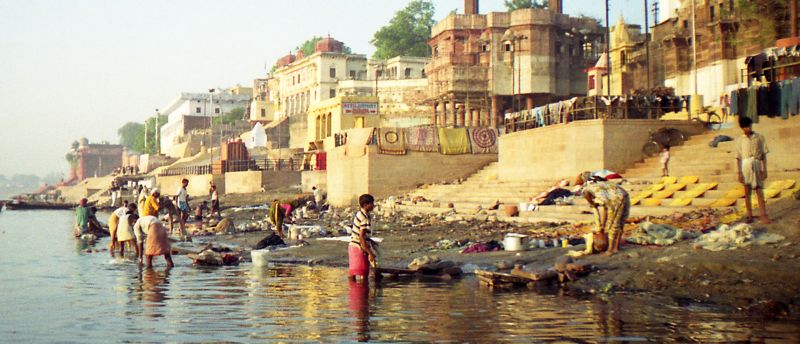Ganga Water Has Heavy Metal and Pesticide Traces
Published on by Water Network Research, Official research team of The Water Network in Academic
Water quality of river Ganga shows the presence of bacterial contamination besides traces of pollutants like heavy metals and pesticides, says the apex pollution monitoring body CPCB.
 In a detailed report covering various aspects of contamination in the river, the Central Pollution Control Board -CPCB- has informed the National Green Tribunal that the Ganga, spanning a distance of 543 km between Haridwar and Kanpur, was affected by 1,072 seriously polluting industries which are releasing heavy metals and pesticides.
In a detailed report covering various aspects of contamination in the river, the Central Pollution Control Board -CPCB- has informed the National Green Tribunal that the Ganga, spanning a distance of 543 km between Haridwar and Kanpur, was affected by 1,072 seriously polluting industries which are releasing heavy metals and pesticides.
"Before many years/centuries, the river was not blocked for any purpose and due to limited habitation on the bank of the river, hardly there was disposal of any waste into the river. Now, the River Ganga is blocked/dammed at many places (upper Himalayan stretches and on the plains such as Haridwar, Bijnor, Narora and Kanpur) and water has been diverted for various uses.
As a result, the water quality and ecological sanctity is threatened.
"Water quality of River Ganga is showing presence of bacterial contamination besides reporting of presence of trace pollutants like heavy metals and pesticides in some of the studies," CPCB said in the report filed in pursuance to the NGT's September 6 order.
At present, 823.1 million litres per day (MLD) of untreated sewage and 212.42 MLD of industrial effluent flows into the river while three of the four monitored Sewage Treatment Plants (STP) were non-compliant with the set standards, it said.
With regard to Zero Liquid Discharge (ZLD) by industries, CPCB said it has already directed them to achieve ZLD in distillery, tannery and textile units as it was mandatory that pollutants like chromium, total dissolved solid and other chemicals are separated before they are disposed of.
"All the industries discharging industrial effluents should transmit online data of their effluent quality on uninterrupted basis to CPCB and SPCBs. These industries should also submit fortnightly data of effluent quality based on samples collected manually and getting it analysed through laboratory recognised under Environment Protection Act," it said.
Source: The Times of India
Media
Taxonomy
- Water Pollution
- River Studies
- Pesticides
- Heavy metals
- Pollution
- Contaminant Control
5 Comments
-
We have done training courses on water quality monitoring in India in 89, 90 and 91. We are always willing to help. But in the end, a priority is only a priority when you give it priority. Water is a number one priority in India
-
to solve the problem must to identified all the pollution source and for that you need to have an water inspection body
-
River Gange Rejuvenation needs CPCB and SPCBs to work on compliance and enforcement. Increase minimum frequency of inspections to less than three months. Increase personnel and ask for more money to fund Engineers, Scientists, and Environmental Protection Specialists. Be careful not to hire too many attorneys. At one time USEPA had one Engineer to one Attorney on payroll. Legal Enforcement Authority takes time and slows process. 1,072 seriously polluting industries which are releasing heavy metals and pesticides. CPCB should consider another testing lab with AA and GS units for river Ganga. Pre-treatment of chromium is not easy. By- products NaCy used in chromium process. Problem if ph gets too low. CPCB and SPCBs need many years and funding. Environmental Challenge will take time. Under present India Rapid Assessment it can be done.
-
It is the same old story. Unless STPs and ETPs are shifted 5 to 10 km crow distance away from the river banks and unless GARLAND SEWERS are constructed all along the River Banks along the habituated or Industrial limits, pollutants of all kinds will keep polluting Rivers. An Organic Cultivation belt all around the River Systems can only prevent Agro Chemicals and Fertilisers from entering the river system thru surface run off as well as thru the u/g aquifers. STPs and ETPs should not be Operated by Govt bodies.. Let O&M be privatised.
-
yeah there will be traces of that becoz, this water contains loot of human material and also mixed water from pesticides industries.